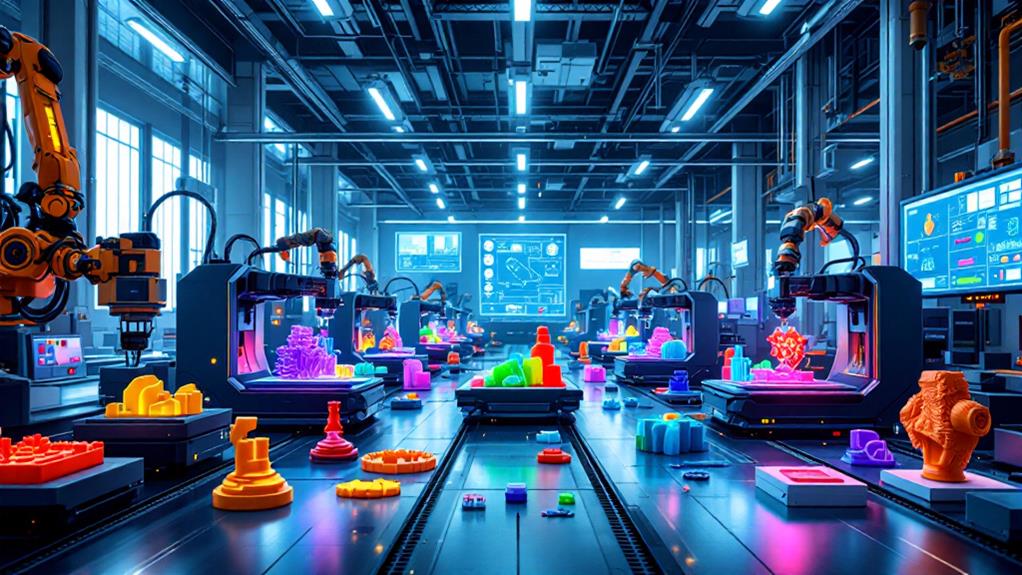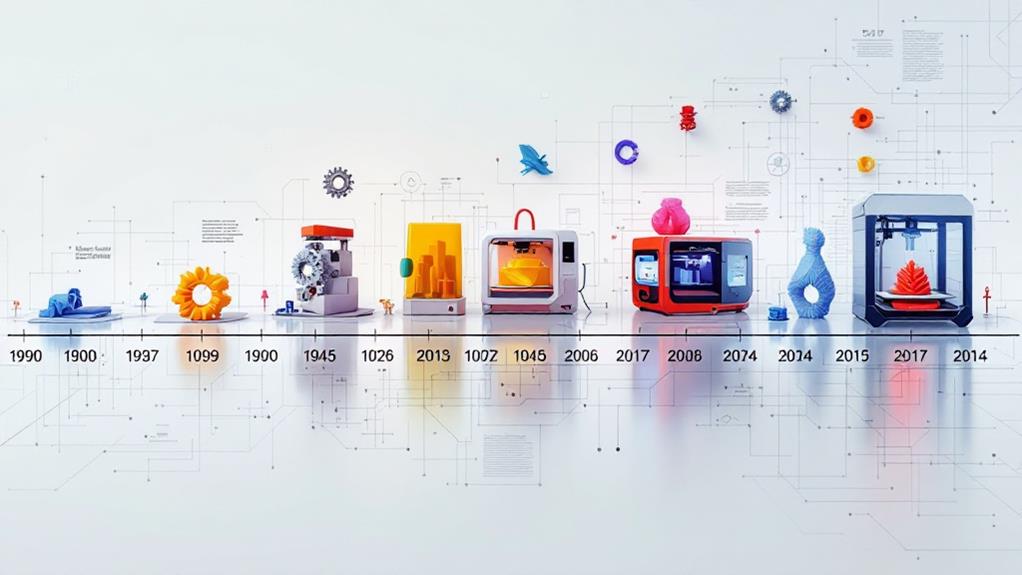The Benefits of 3D Printing: Revolutionizing Manufacturing and More
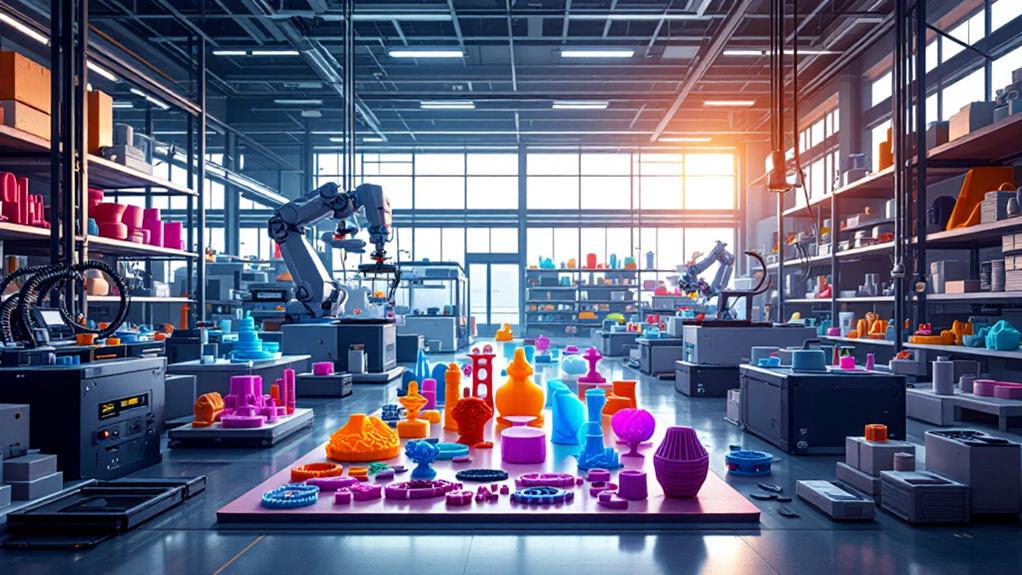
You'll uncover 3D printing is transforming industries by streamlining manufacturing with rapid prototyping and waste reduction, elevating efficiency. In healthcare, it offers personalized treatments with patient-specific implants and bioprinting of tissues. The aerospace sector benefits from lightweight components and quick design refinements. It also promotes sustainable practices by minimizing waste and using renewable materials. You'll appreciate the flexibility in creating customized products, enhancing agility and reducing costs. Innovation thrives as smart prototyping speeds up development. The potential of 3D printing will continue to unfold exciting opportunities across different fields, revealing even more advantages.
Transforming Manufacturing Processes
In the constantly changing landscape of manufacturing, 3D printing is transforming how products are designed and produced. You're no longer confined to traditional methods that often limit creativity and efficiency. With additive manufacturing, you can build complex geometries that were once impossible, allowing for design optimization that improves functionality and aesthetics. Imagine being able to tweak a design on the fly, testing it through rapid prototyping without the long lead times that traditionally slow down innovation.
By adopting 3D printing, you can greatly increase production efficiency. It's not just about speed; it's also about reducing waste and using resources wisely. The material diversity available in 3D printing lets you choose from a wide range of materials, each suited for different applications, ensuring that your products meet the highest standards.
Additionally, 3D printing impacts the supply chain by decentralizing production. You can produce parts closer to where they're needed, reducing transportation costs and delays. This flexibility means you can respond quickly to market demands and reduce inventory costs. Accept this technology, and you'll find yourself ahead in the fast-paced world of manufacturing.
Advancing Healthcare Solutions
Revolutionize the way you approach healthcare by embracing the potential of 3D printing. This groundbreaking technology lets you create medical solutions that are tailored specifically to each patient's unique needs. Imagine a world where patient specific implants are the norm. With 3D printing, you can design implants that perfectly match a patient's anatomy, improving surgical outcomes and reducing recovery times. This customization guarantees better compatibility and boosts the comprehensive effectiveness of medical procedures.
But the advancements don't stop there. 3D printing is paving the way for bioprinting tissues, a breakthrough that could change the future of medicine. You can now envision a scenario where damaged tissues or even organs are replaced with 3D-printed versions made from living cells. This capability has the potential to alleviate organ shortages and provide patients with tailored treatments that were once thought impossible.
Enhancing Aerospace Capabilities
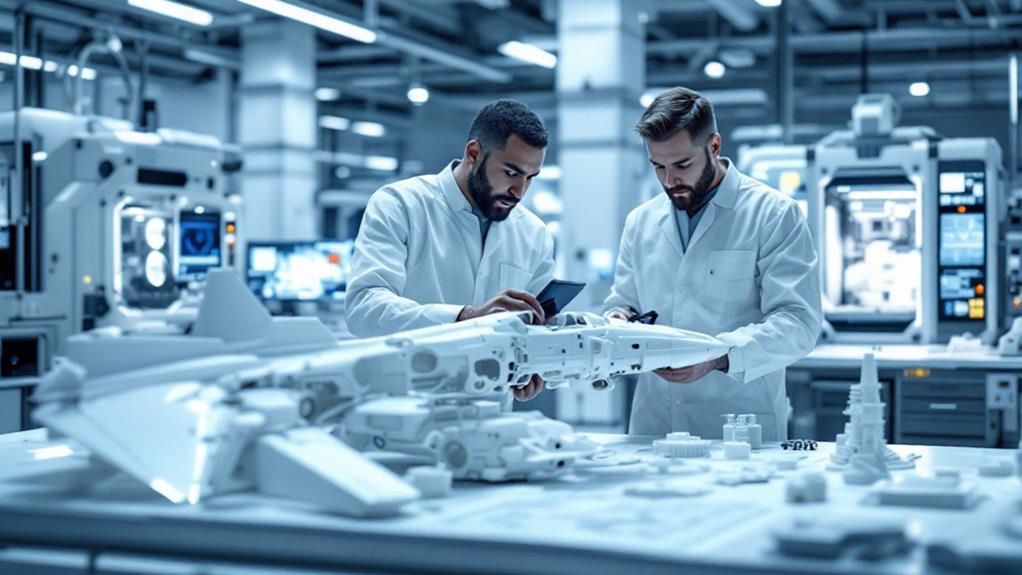
Just as 3D printing is transforming healthcare, it's also opening new frontiers in aerospace. By using additive manufacturing, you can create lightweight components that improve fuel efficiency and aircraft performance. This technology allows for rapid prototyping, enabling you to test and refine your designs quickly. No longer do you need to wait months for traditional manufacturing processes; with 3D printing, design optimization becomes seamless and efficient.
The ability to produce complex geometries is another major advantage. You can create intricate parts that were previously impossible or too costly to manufacture using conventional methods. This freedom in design not only enhances the functionality of aerospace components but also helps reduce the weight of aircraft considerably. Lighter aircraft mean less fuel consumption, allowing for longer flights and reduced costs.
Additionally, 3D printing improves supply chain efficiency by allowing on-demand production of parts. You don't need to stockpile large inventories or face delays due to supplier issues. Instead, you can produce components as needed, reducing lead times and improving flexibility. By embracing 3D printing in aerospace, you're not just optimizing performance, but also paving the way for more cutting-edge and efficient aviation solutions.
Promoting Sustainable Practices
Adopting 3D printing in manufacturing plays a crucial role in promoting sustainable practices. You can notably reduce waste because this technology uses only the material necessary for production, unlike traditional methods that often generate excess. By using renewable materials, 3D printing supports eco-friendly processes, helping you decrease reliance on non-renewable resources. Furthermore, 3D printers can operate closer to end-users, enabling localized production. This minimizes the carbon footprint associated with transportation and supports local economies.
Consider these benefits:
- Energy Efficiency: 3D printing often requires less energy than conventional manufacturing methods. You can create complex designs without the need for multiple machines or processes, saving energy in the long run.
- Lifecycle Analysis: With 3D printing, you gain a better understanding of a product's environmental impact from creation to disposal. This insight lets you make informed decisions about materials and design, aligning with sustainable goals.
- Closed Loop Systems: You can implement closed loop systems where used products are recycled back into the production cycle. This approach reduces waste and conserves resources, contributing to a circular economy.
Enabling Customization and Flexibility
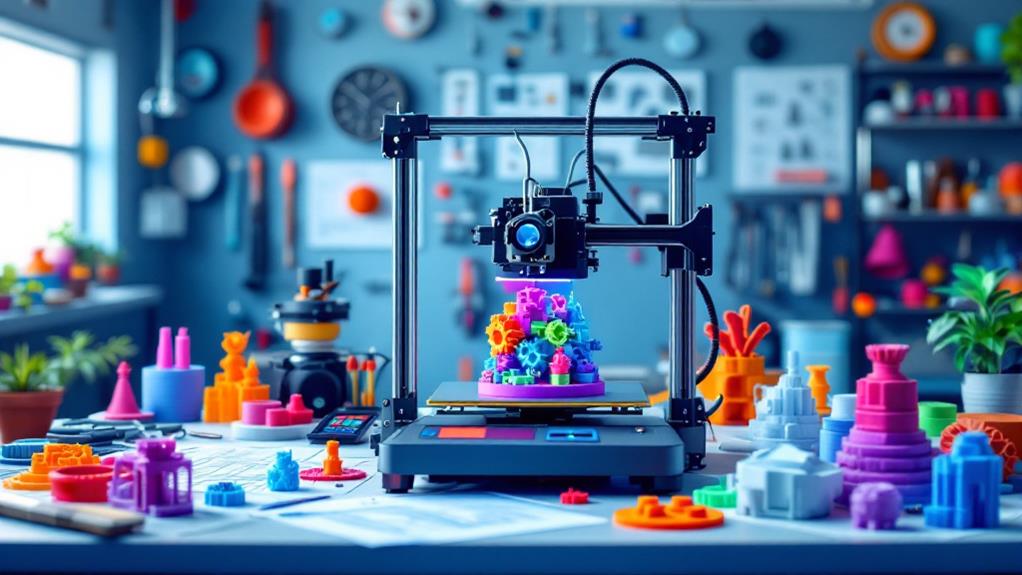
While 3D printing supports sustainable practices, it also shines in its ability to enable customization and flexibility. Imagine having the power to create personalized products tailored to your exact needs. With 3D printing, you can design unique items, regardless of whether it's a custom phone case, a tailored prosthetic, or bespoke jewelry. This technology lets you express individuality and meet specific demands without the constraints of traditional manufacturing.
3D printing thrives on agile design, allowing you to iterate and refine prototypes quickly. This flexibility is especially beneficial for small businesses and entrepreneurs looking to test new ideas without committing to large production runs. You can make adjustments on the fly, ensuring that the final product aligns perfectly with your vision. It's a game-changer for industries that require rapid adaptation and innovation.
Furthermore, 3D printing eliminates the need for extensive inventories, reducing waste and lowering costs. You produce items as needed, minimizing the risk of overproduction. This approach not only saves resources but also empowers you to respond swiftly to market trends and consumer preferences. Essentially, 3D printing puts you in control, offering a dynamic, flexible approach to manufacturing that aligns with modern demands.
Driving Innovation Across Industries
Across numerous fields, 3D printing is transforming the way industries create. By enabling smart prototyping and fostering collaborative design, this technology isn't just a tool; it's a catalyst for change. You're witnessing industries from automotive to healthcare harnessing its potential to push boundaries and redefine possibilities.
Here's how 3D printing is driving creation:
- Smart Prototyping: You can quickly create and test prototypes, drastically reducing the time and cost involved in product development. This allows you to iterate designs rapidly and efficiently, ensuring the final product is as polished as possible.
- Collaborative Design: 3D printing encourages teamwork by allowing multiple designers to contribute simultaneously from different locations. You're able to share and refine ideas in real-time, leading to more creative solutions and breakthrough products.
- Cross-Industry Applications: Regardless of it being crafting intricate components for aerospace or custom medical implants, 3D printing's versatility is unmatched. This flexibility means you can adapt the technology to fit specific industry needs, driving creation across the board.
Incorporating 3D printing into your processes lets you stay ahead in a competitive market, turning ideas into tangible creations faster than ever before.
